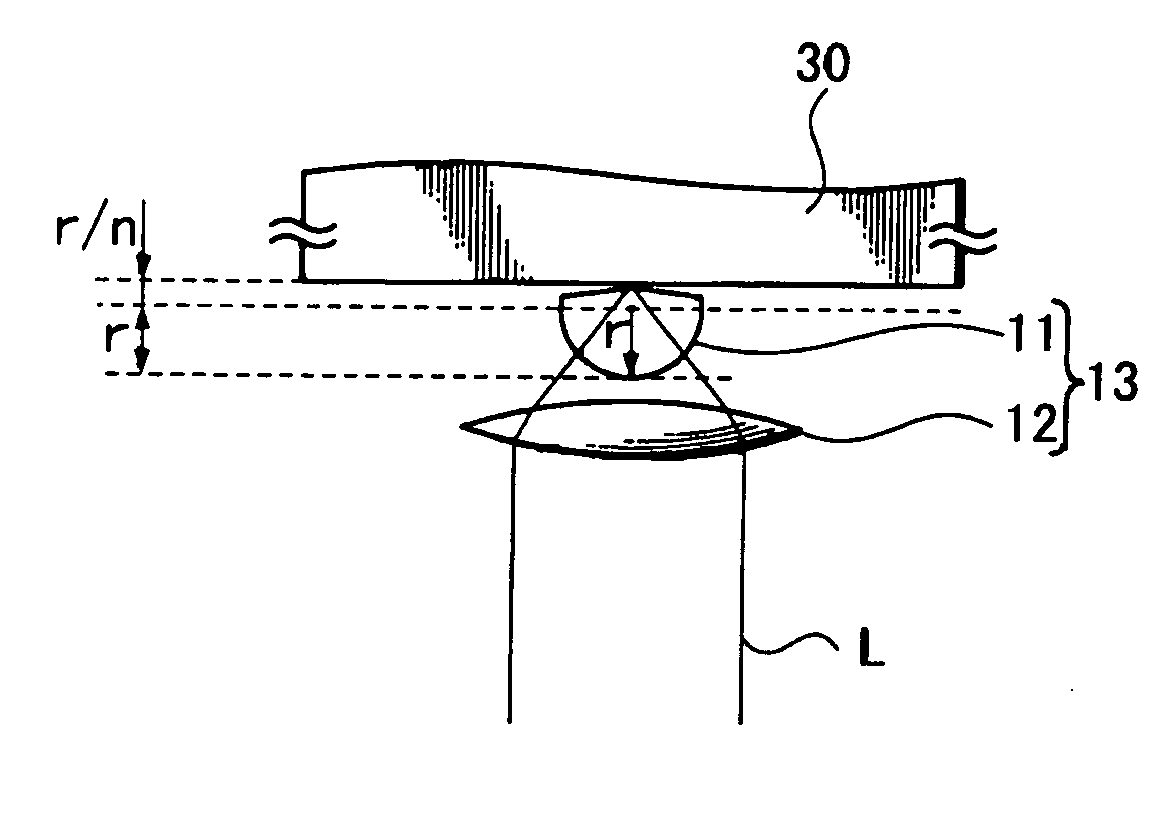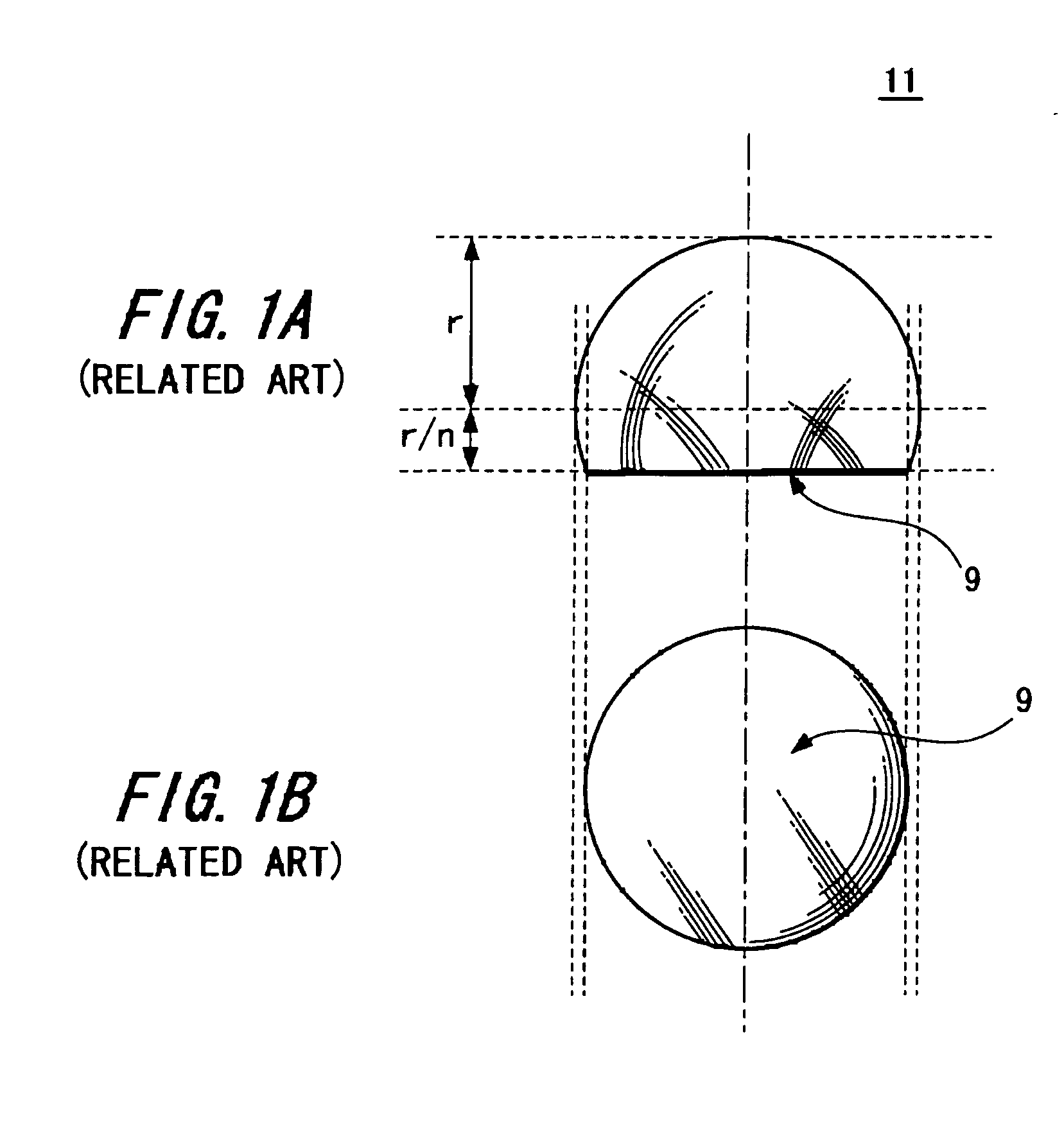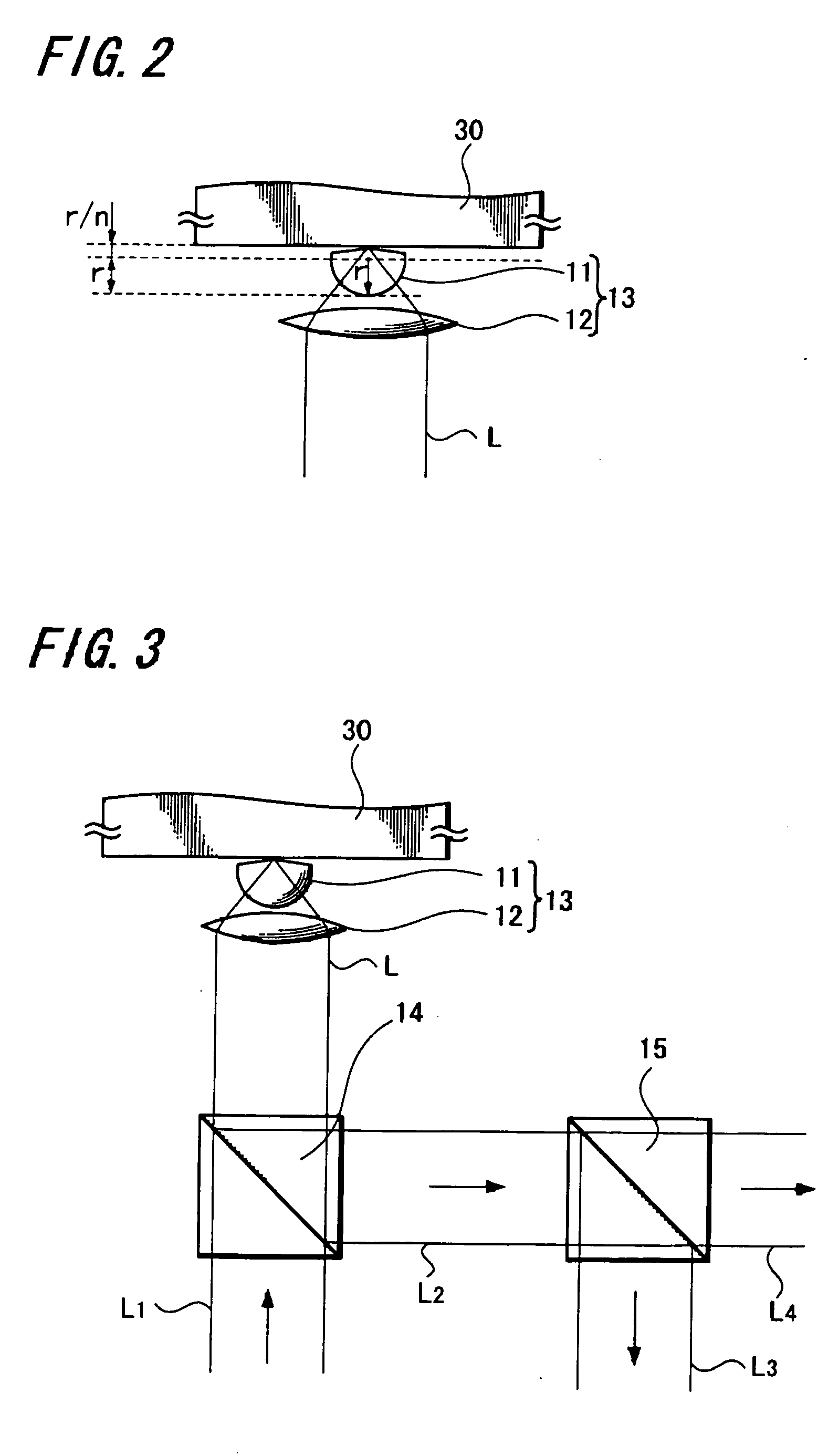Solid immersion lens, condensing lens, optical pickup device, optical recording and reproducing apparatus and method of forming solid immersion lens
a technology of solid immersion lens and optical pickup device, which is applied in the direction of lenses, instruments, record information storage, etc., can solve the problems of difficult to obtain a solid immersion lens with a large numerical aperture, unavoidable shape limitation of the condensing lens, and small tilt margin, etc., to achieve the effect of large numerical aperture, easy to obtain and maximum numerical apertur
- Summary
- Abstract
- Description
- Claims
- Application Information
AI Technical Summary
Benefits of technology
Problems solved by technology
Method used
Image
Examples
Embodiment Construction
[0101] The present invention will now be described in detail with reference to the drawings.
[0102] The present invention can be applied to a solid immersion lens and a manufacturing method thereof, a condensing lens comprising this solid immersion lens and an optical lens with its optical axis coincident with the solid immersion lens and which is located on the opposite side of an objective lens side. Further, the present invention can be applied to an optical pickup device including this condensing lens and which adopts a so-called near-field optical recording and reproducing system and an optical recording and reproducing apparatus including this optical pickup device.
[0103] First, prior to the description of the solid immersion lens according to the present invention and a forming method thereof, embodiments in which the present invention was applied to the condensing lens, the optical pickup device and the optical recording and reproducing apparatus will be described with refe...
PUM
| Property | Measurement | Unit |
|---|---|---|
| oscillation wavelength | aaaaa | aaaaa |
| oscillation wavelength | aaaaa | aaaaa |
| diameter | aaaaa | aaaaa |
Abstract
Description
Claims
Application Information
 Login to View More
Login to View More - R&D
- Intellectual Property
- Life Sciences
- Materials
- Tech Scout
- Unparalleled Data Quality
- Higher Quality Content
- 60% Fewer Hallucinations
Browse by: Latest US Patents, China's latest patents, Technical Efficacy Thesaurus, Application Domain, Technology Topic, Popular Technical Reports.
© 2025 PatSnap. All rights reserved.Legal|Privacy policy|Modern Slavery Act Transparency Statement|Sitemap|About US| Contact US: help@patsnap.com



